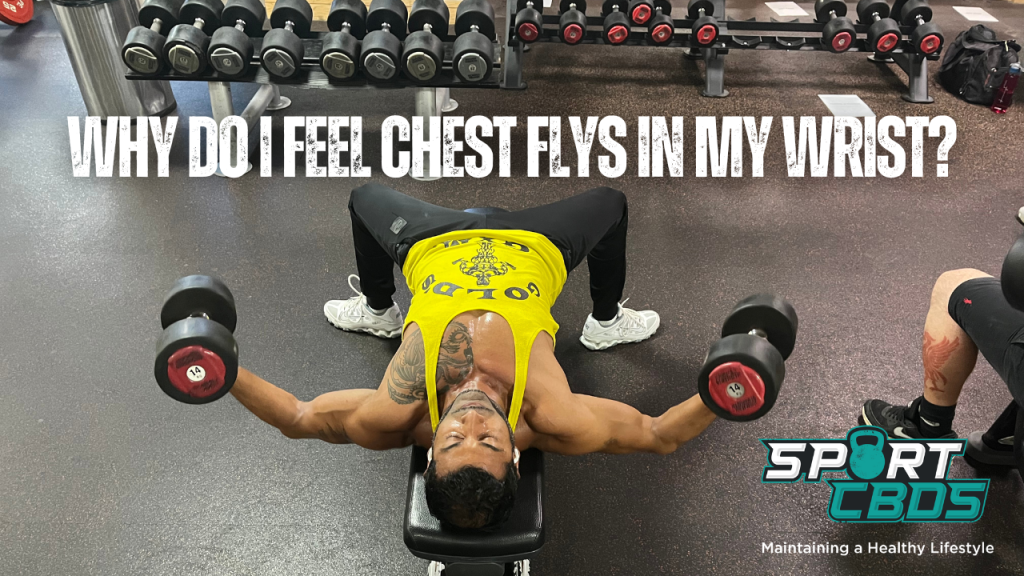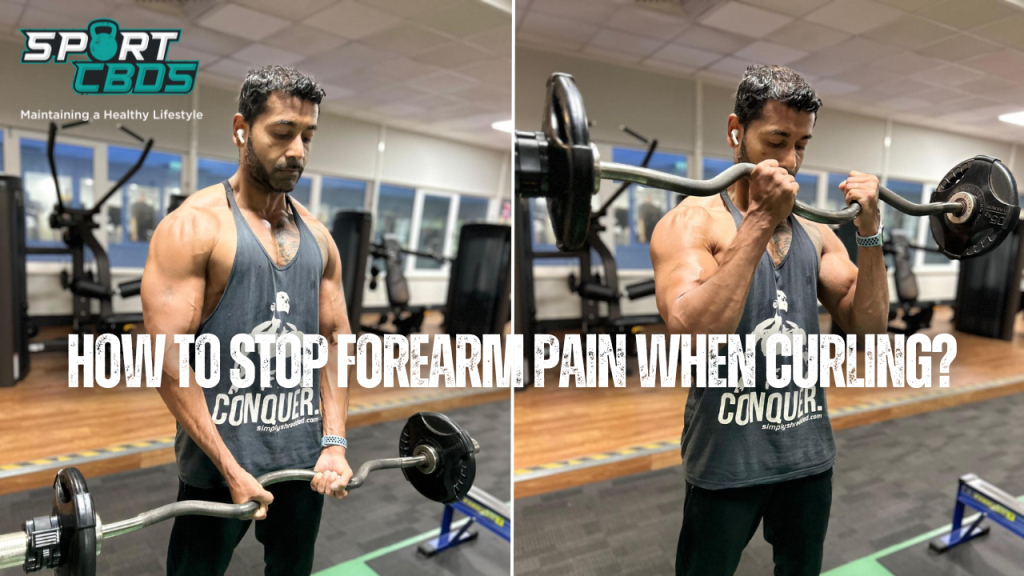
Why Do I Feel Chest Flys in My Wrist? Why They Hurt and How to Fix It
Chest flys are a popular exercise among fitness enthusiasts and athletes alike, known for their effectiveness in targeting the chest muscles.
However, a common issue that many individuals face while performing this exercise is feeling the strain in their wrists instead of their chest. This article aims to delve into the reasons behind this phenomenon and provide insights into the importance of maintaining proper form during chest fly exercises.
Maintaining proper form during any exercise is crucial, not only to reap the maximum benefits but also to prevent potential injuries. In the case of chest flys, improper form can lead to unnecessary strain on the wrists, detracting from the exercise’s effectiveness and potentially causing discomfort or injury.
By understanding the mechanics of chest flys and the role of the wrists in this exercise, we can better address this issue and ensure a safer, more effective workout.
Why Do I Feel Chest Flys in My Wrist?
Feeling chest flys in your wrist is often a result of a combination of factors including wrist sensitivity, improper form, and inadequate grip strength. When performing chest flys, your wrists act as a fulcrum, bearing the load of the weights. If your wrists are not in a neutral and stable position, this can lead to unnecessary strain, causing discomfort or pain, especially for those with wrist sensitivity. Moreover, improper form, such as bending or twisting the wrists or using weights that are too heavy, can exacerbate this strain. Lastly, a lack of grip strength can also contribute to this issue. A stronger grip can provide better control and stability during the exercise, reducing the risk of wrist strain. Improving your grip strength, ensuring proper form, and using appropriate weights can help mitigate this issue.
Understanding Chest Flys
Chest flys are a type of strength training exercise primarily targeting the pectoral muscles, which form the bulk of the chest. They are performed using dumbbells, cables, or a pec deck machine, with the individual executing a wide arc motion with their arms to engage the chest muscles.
The benefits of chest flys are numerous:
- Targeted Muscle Engagement: Chest flys specifically target the pectoral muscles, allowing for focused muscle development in the chest area.
- Improved Muscle Balance: By isolating the chest muscles, chest flys can help improve muscle balance and symmetry, contributing to a more proportionate physique.
- Increased Strength and Endurance: Regularly performing chest flys can increase chest strength and endurance, enhancing performance in other exercises and daily activities.
- Versatility: Chest flys can be performed with various equipment (dumbbells, cables, pec deck machines), making them a versatile addition to any workout routine.
However, it’s important to note that the effectiveness of chest flys heavily relies on proper form. Incorrect execution can lead to reduced effectiveness and potential strain on other parts of the body, such as the wrists. In the following sections, we’ll explore how to maintain proper form during chest flys and how to address and prevent wrist strain.
Wrist Sensitivity and Chest Flys
Wrist sensitivity refers to a heightened response to strain or pressure applied to the wrists. This can be due to various factors, including previous injuries, underlying health conditions, or simply the anatomical structure of the individual’s wrist. When performing exercises like chest flys, individuals with wrist sensitivity may experience discomfort or pain.
Chest flys can affect the wrists due to the role they play in the exercise. As you hold the weights and move your arms in a wide arc, your wrists act as a fulcrum, bearing the load of the weights. If your wrists are not in a neutral and stable position, this can lead to unnecessary strain, causing discomfort or pain, especially for those with wrist sensitivity.
Here are some tips to avoid wrist strain during chest flys:
- Maintain a Neutral Wrist Position: Ensure your wrists are in a straight line with your forearms throughout the exercise. Avoid bending or twisting your wrists.
- Use Appropriate Weights: Using weights that are too heavy can put excessive strain on your wrists. Start with lighter weights and gradually increase as your strength improves.
- Strengthen Your Wrists: Incorporate wrist-strengthening exercises into your routine to improve wrist stability and resilience.
Related: Why Do I Feel Dips in My Back? Here’s What Your Body is Telling You
The Role of Proper Form in Chest Flys
Maintaining proper form during chest flys is crucial for several reasons. Firstly, it ensures that the targeted muscles (the pectorals) are effectively engaged. Secondly, it minimizes the risk of injury by ensuring that the strain is evenly distributed and not concentrated on non-target areas like the wrists.
Improper form, such as bending or twisting the wrists, using weights that are too heavy, or not maintaining a controlled motion, can lead to wrist pain. This is because such actions can put undue strain on the wrists, leading to discomfort or even injury.
Here are some steps to ensure proper form during chest flys:
- Positioning: Lie flat on your back on a bench with your feet firmly on the ground. Hold a dumbbell in each hand with your arms extended out to the sides and your elbows slightly bent.
- Movement: Slowly bring the weights together in a wide arc above your chest, keeping your elbows fixed in a slightly bent position. Ensure your wrists remain in line with your forearms throughout the movement.
- Control: Avoid jerky or rapid movements. The motion should be slow and controlled, both when lifting and lowering the weights.
By following these steps, you can ensure proper form during chest flys, maximizing their effectiveness and minimizing the risk of wrist strain.
Alternatives and Modifications for Chest Flys
If you’re experiencing wrist discomfort during chest flys, there are several alternative exercises that target the same muscles and modifications you can make to reduce wrist strain.
Alternatives:
- Push-ups: Push-ups are a great bodyweight exercise that targets the chest muscles. They can be modified to be more or less challenging based on your fitness level.
- Bench Press: The bench press is a classic chest exercise that can effectively target your pectoral muscles without putting too much strain on your wrists.
- Cable Crossovers: This exercise also targets the chest muscles and allows for a more controlled movement, reducing the risk of wrist strain.
Modifications:
- Use a Chest Fly Machine: Machines can help stabilize your wrists and control the movement, reducing the risk of strain.
- Adjust Your Grip: Try using a neutral or hammer grip (palms facing each other) to reduce wrist strain.
- Use Straps or Wrist Wraps: These can provide additional wrist support and stability during the exercise.
Grip Strength Matters
Grip strength plays a crucial role in exercises like chest flys, where the wrists bear a significant load. A stronger grip can provide better control and stability, reducing the risk of wrist strain. According to a study published in the Journal of Physical Therapy Science, grip strength exercises can significantly improve wrist stability and reduce the risk of wrist discomfort during weight-bearing exercises like chest flys.
For those looking to improve their grip strength, consider using tools like the Grip Strengthener available on Amazon. This device is designed to strengthen your grip, which can improve your performance in exercises like chest flys and reduce the risk of wrist discomfort.
Additionally, incorporating CBD products from Sport CBDs into your routine may help manage discomfort and promote recovery. Always remember to consult with a healthcare professional before starting any new supplement regimen.
Related: Chest Sculpting 101: Is Flat Bench Press and Incline Bench Press Enough for Your Chest?
FAQs
Where should I feel chest flys?
You should primarily feel chest flys in your pectoral muscles, which are located in your chest. If you’re feeling the exercise in other areas, it may be a sign that you need to adjust your form or technique.
Why do chest flys hurt my arms?
If you’re feeling pain in your arms during chest flys, it could be due to several reasons. You might be using weights that are too heavy, or your form could be incorrect. It’s also possible that you’re overextending your arms, which can put unnecessary strain on your elbow joints.
Why are chest flys so hard?
Chest flys can be challenging because they require a good deal of upper body strength, particularly in the chest and shoulders. They also require a certain level of technique and control to perform correctly.
Why don’t I feel my chest during chest flys?
If you’re not feeling your chest during chest flys, it could be because your form is off, or you’re not using the correct weight. Make sure you’re not lifting too heavy or too light, and focus on squeezing your chest muscles as you perform the exercise.
Why do I feel chest flys in my wrists?
Feeling chest flys in your wrists is often a sign of improper form or wrist sensitivity. Make sure your wrists are in a neutral position and not bearing the brunt of the weight. If the problem persists, consider using wrist wraps or trying alternative exercises.
How can I avoid wrist pain during chest flys?
To avoid wrist pain during chest flys, ensure your wrists are in a neutral position, use appropriate weights, and consider using wrist wraps for additional support. Strengthening your wrists and forearms can also help.
What are some alternatives to chest flys if I have wrist pain?
If you have wrist pain, consider exercises like push-ups, bench presses, or cable crossovers. These exercises target the same muscles as chest flys but can be easier on the wrists.
Final Thoughts…
Chest flys are an effective exercise for targeting the pectoral muscles, contributing to a stronger and more defined chest. However, it’s crucial to maintain proper form and technique to ensure the exercise’s effectiveness and prevent potential discomfort or injury, particularly in the wrists.
Remember, your wrists should be in a neutral position throughout the exercise, and the weights you use should be appropriate for your strength level. If you experience wrist discomfort during chest flys, consider using wrist wraps for additional support or trying alternative exercises that target the same muscles.
Most importantly, always listen to your body during workouts. If you feel pain or discomfort, it’s a sign that something may be off. Don’t ignore these signals. Instead, adjust your form, reduce your weight, or try a different exercise. Fitness is a journey, and it’s essential to prioritize your health and well-being along the way.
Do you feel chest flys in your wrist? Have our tips been beneficial to your training? We’d love to hear your feedback, so please share your thoughts in the comments section below.
If you’re a sports enthusiast who utilizes CBD for optimal recovery after intense workouts, then you’ve found your tribe. Welcome to Sport CBDs, where we push our limits in training and prioritize recovery in the most effective way possible.
We regularly share workout routines on our YouTube channel and offer a range of health and fitness products designed to give you that competitive edge.
Why not explore the high-quality CBD products we proudly feature on our site? Visit the Sport CBDs Store by clicking here. In addition to CBD, we also offer an array of fitness clothing and yoga accessories to complement your active lifestyle.
Until next time, we wish you the best in your fitness journey. Remember, your progress is our passion. Stay strong and keep pushing!


